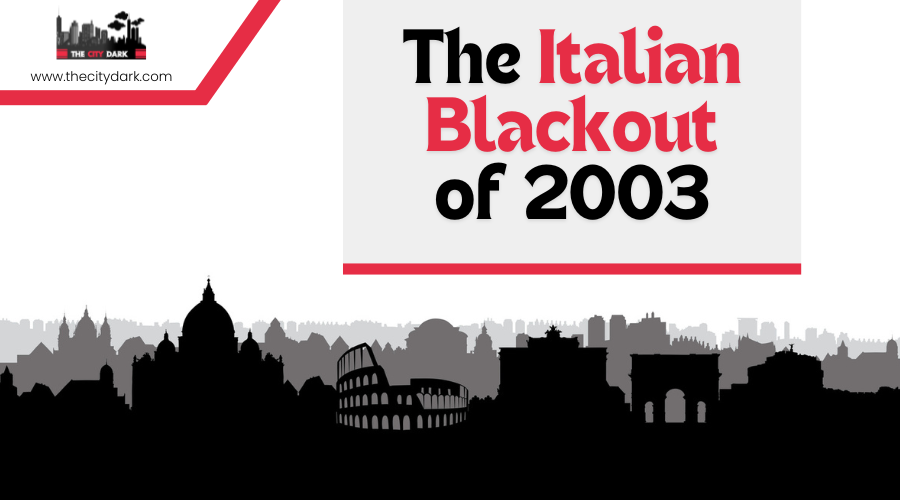The Black Death: Causes and Consequences of the Bubonic Plague in Medieval Europe

The Black Death, one of the deadliest pandemics in human history, struck Europe and Asia in the mid-1300s. Caused by the bacterium Yersinia pestis, the Black Death manifested primarily as the Bubonic Plague. It killed millions and reduced the world's population by a significant margin. This event reshaped societies, economies, and cultures in ways that are still evident today.
The plague reached Europe in 1347, likely through ships arriving from the Black Sea. The disease spread rapidly via trade routes, including the Silk Road. Forms of the plague included bubonic, pneumonic, and septicemic, each with its own deadly effects. Symptoms of the Bubonic Plague included swollen lymph nodes, chills, fatigue, headaches, and high fevers.
The consequences of the Black Death were profound. European population plummeted, labor shortages led to economic upheavals, and social structures were altered. Many saw it as divine punishment, while others sought to understand it through emerging scientific inquiry. This pandemic left a lasting mark on the world, making it a crucial event to study and understand.
Historical Context and Origin
The Black Death was a pandemic that originated in Asia and spread rapidly to Europe. Its impact was devastating, leading to the deaths of millions.
Prelude to the Pandemic
The roots of the Black Death can be traced back to Central Asia, where the bacterium Yersinia pestis was endemic in rodent populations. The trade routes, especially the Silk Road, played a crucial role in the dissemination of the plague. Merchants, along with their goods, inadvertently transported infected fleas and rats across vast distances.
Interactions between traders from Asia and Europe facilitated the movement of the disease. The bustling trade activities during the 14th century meant that the pathogen had ample opportunities to spread. As goods moved from one region to another, so did the carriers of the plague.
Outbreak in Asia
Early outbreaks were recorded in China during the 1330s. These incidents were the precursors to the larger pandemic. The dense population and constant movement of people and goods made it an ideal environment for the plague to thrive and expand.
The Mongol Empire, which controlled a significant portion of the Silk Road, was particularly affected. The plague weakened their hold on various territories. Reports from this period indicate high mortality rates and societal disruption.
Spread to Europe
In 1347, the plague reached Europe, entering through trading ports such as those in Genoa, Italy. Ships coming from the Black Sea region, where the plague was active, brought the disease to European shores. Rats and fleas on these trading vessels were primary vectors for the transmission.
From Italy, the plague quickly spread to other parts of Europe. By 1352, it had swept across most of the continent, leaving a trail of death and despair. Major cities faced severe population declines. The connectivity within the European trade network facilitated the rapid spread of the disease, making it one of the deadliest pandemics in history.
Biology of the Plague

The Black Death was caused by the bacterium Yersinia pestis, which spread through fleas and rodents. This bacterium has different forms and transmission methods that lead to serious health impacts.
Yersinia Pestis Bacterium
Yersinia pestis is a bacillus-shaped bacterium responsible for the Black Death. This bacterium infects both humans and animals, causing severe illness.
Once inside the body, it targets the lymphatic system, leading to swollen lymph nodes. These swollen nodes, called buboes, are characteristic of the bubonic plague. The bacterium disrupts the immune system, making it difficult for the body to fight off the infection.
Yersinia pestis multiplies rapidly, spreading to different tissues and organs. If untreated, it can result in high mortality rates.
Transmission Vectors
The primary vectors for transmission are fleas and rodents, specifically rats. Fleas carry the bacterium Yersinia pestis, and when they bite an infected host, they become carriers.
Fleas transfer the bacterium to humans and other animals through bites. The infected flea regurgitates Yersinia pestis into the skin, where it enters the bloodstream.
Rats and other rodents act as reservoirs for the bacterium, maintaining the cycle of infection. When fleas feed on infected rats and then bite humans, they spread the disease quickly.
Forms of the Plague
Yersinia pestis can cause three main forms of plague: bubonic, pneumonic, and septicemic. The bubonic form is the most common and is marked by swollen lymph nodes or buboes. Symptoms include fever, headaches, and vomiting.
The pneumonic plague affects the lungs and can spread from person to person through airborne droplets, making it highly contagious. Symptoms include coughing and difficulty breathing.
Septicemic plague occurs when the bacterium spreads into the bloodstream. This form leads to severe sepsis, organ failure, and often rapid death. Symptoms can include abdominal pain, fever, and bleeding under the skin.
Each form of the plague has distinct symptoms and requires different treatment strategies to manage the infection effectively.
Spread and Impact

The Black Death spread via trade routes and greatly affected the population and social structures in Europe.
European Expansion
The Black Death reached Europe primarily through Mediterranean ports around 1347. Ships from the East, often carrying rats and fleas, introduced the disease. Major trade hubs like Italy, France, and England were hit hard. Towns along these trade routes became hotspots. The rapid spread was facilitated by dense populations and limited medical knowledge.
Demographic Catastrophe
By 1351, the epidemic had caused a demographic collapse. Estimates suggest that the population fell from 475 million to between 350 and 375 million. Villages were abandoned, and towns saw a drastic decline in inhabitants. This loss of life impacted not only the urban centers but also the rural areas.
Economic and Social Ramifications
The labor force was decimated, leading to economic shifts. Fewer workers meant higher wages and better living conditions for survivors. Socially, the plague led to a questioning of established norms and increased tensions between different classes. Trade slowed as fear of contagion spread, impacting economies far beyond the initial outbreak areas.
Social and Cultural Consequences

The Black Death had profound social and cultural impacts, altering religious attitudes and significantly influencing art and literature. These changes reflected the struggles, fears, and hopes of the people living through this devastating period.
Shifts in Religious Attitudes
The pandemic shook the foundations of the church, as many questioned why such suffering was permitted. Some people turned to extreme measures like the flagellants, who believed that self-punishment would atone for the sins of humanity. Others grew skeptical of church authority, noticing that prayers and rituals did little to stop the spread of the plague.
Suspicion and blame fell on minority groups, notably the Jews, who were often falsely accused of causing the plague by poisoning wells. This led to brutal persecutions and massacres across Europe. The belief in the afterlife and divine judgment saw a resurgence, with more focus on achieving salvation through personal piety rather than church-led rituals.
Changes in Art and Literature
Art and literature during and after the Black Death became heavily infused with themes of death and the afterlife. Paintings and writings often depicted macabre scenes of skeletons, dancing figures of death, and the grieving process. This period saw the rise of the "Danse Macabre" motif, symbolizing the universality of death.
Literature transformed, with many writers penning works on the temporary nature of life and the certainty of death. Stories and poems, like Giovanni Boccaccio's The Decameron, reflected the social upheaval and personal tales from the plague. There was a notable shift towards more introspective and human-centered narratives, moving away from solely religious texts.
Medical Response and Treatments

During the Black Death, medical knowledge was limited, and treatments were primitive. Efforts to combat the plague included quarantine measures and sanitation improvements to curb the spread.
Contemporary Understanding of Disease
At the time of the Black Death, few understood the disease's cause. People believed it was due to miasma or "bad air," and not bacteria. It wasn't until later that Alexandre Yersin identified Yersinia pestis as the bacteria responsible. Medieval doctors tried various remedies including bloodletting and herbal concoctions with limited success.
Mandrake root, arsenic, and posies were commonly used treatments, though ineffective. Quarantines were one of the few measures that provided any real benefit, preventing the spread from person to person.
Quarantine and Public Health
Efforts to control the Black Death led to the first organized quarantine measures. Ships arriving in Venice were isolated for 40 days (quaranta giorni), which is where the term quarantine originates. This practice significantly reduced the spread of the disease.
Public health ordinances were issued to improve sanitation, including the removal of waste and dead bodies from urban areas. These measures were rudimentary compared to modern standards but were crucial in slowing the plague. Modern-day antibiotics and guidelines from the World Health Organization would have drastically improved the situation, yet these were centuries away from being developed.
Reflections in World History
The Black Death had a profound impact on Europe and Asia, and its legacy resonates in modern surveillance and responses to outbreaks.
The Plague in Retrospect
The Black Death, a pandemic of the bubonic plague, struck Europe and Asia from 1347 to 1352. It killed an estimated 25-30 million people. The disease likely came from central Asia, spread via trade routes, and eventually reached Europe through ships carrying infected rats.
The mortality rate was devastating. Bubonic plague caused fever, shivering, vomiting, and blackened tissue. Many communities faced near-total depopulation. Families were torn apart, and the social fabric was deeply affected.
Economic consequences were severe. Labor shortages caused wages to rise, and feudal systems weakened. Culturally, the pandemic influenced art and literature, instilling a pervasive sense of mortality and suffering.
Modern Outbreaks and Surveillance
While the Black Death itself is history, the bubonic plague has not entirely disappeared. Cases still occur, often in rural areas of places like California and other parts of the world.
Modern surveillance and swift response help prevent large outbreaks. Public health measures include monitoring rodent populations and educating the public about symptoms. Antibiotics can treat the disease effectively today, but early diagnosis is crucial.
International cooperation and rapid reporting systems help contain outbreaks. Efforts to maintain sanitation and control rodent populations are also key to preventing new pandemics. By learning from the past, modern medicine continues to protect against this ancient scourge.




